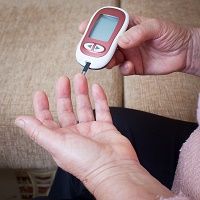Article
FDA Approves Glyxambi for Type 2 Diabetes
Author(s):
The Food and Drug Administration has approved a new medication to improve glycemic control in adults with type 2 diabetes.

The Food and Drug Administration has approved a new medication to improve glycemic control in adults with type 2 diabetes, according to a press release from the drug’s developers.
The drug, Glyxambi, was developed by Boehringer Ingelheim Pharmaceuticals Inc. and Eli Lilly and Co. The once-daily tablet is indicated for use alongside diet and exercise to lower blood sugar in type 2 diabetes patients. It is not for patients with type 1 diabetes.
In its press release, Boehringer Ingelheim said the drug is the first diabetes treatment in the US to combine the dual mechanisms of actions of a sodium glucose co-transporter inhibitor (which removes glucose through the urine) and a dipeptidyl peptidase-4 inhibitor (which increases hormones that stimulate the pancreas to produce more glucose while stimulating the liver to produce less). The tablet combines 2 medicines, 10 or 25 mg of empagliflozin and 5 mg of linagliptin.
“For patients uncontrolled on metformin, phase III trial results showed Glyxambi provided significantly greater reductions in blood glucose levels compared with either empagliflozin or linagliptin alone,” said Paul Fonteyne, president and CEO of Boehringer Ingelheim Pharmaceuticals, in the press release.
The phase III trial included a randomized group of 686 adults, each with type 2 diabetes and a hemoglobin A1C level between 7.0% and 10.5%. At 24 weeks, 58% of patients who received Glyxambi with 10 mg of empagliflozin had an A1C level lower than 7.0%. Of those receiving a Glyzambi tablet with 25 mg of empagliflozin, 62% had A1C levels beneath 7.0%. Only 28% (10 mg) and 33% (25 mg) of patients who received empagliflozin alone had A1C levels lower than 7.0%. Thirty-six percent of people who were given linagliptin alone had A1C levels of 7.0% or below.
The drug is not approved for lowering weight, but the companies said their study showed Glyxambi lowered body weight by about 3%, compared to 0.7% in patients who were given linagliptin alone.




